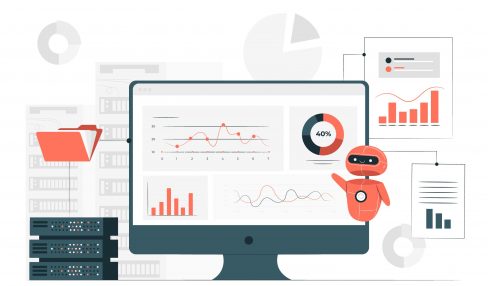What Is The Key Idea Behind Agrigenomics?
01 October 2022
3 Mins Read

toc impalement
By 2050, the world’s population is expected to expand by a staggering 9 billion people, according to predictions.
The food industry today has the challenge of making ends meet, and more than 27% of all workers globally are employed in agriculture. Here, cutting-edge agricultural technology (AgriTech) is helping satisfy the demands of an expanding population while enabling the agriculture sector to flourish globally.
The use of genomics in agriculture is called agrigenomics. It has and will continue to support sustainable production while offering answers to the expanding issues related to feeding the world’s population.
With the aid of modern technologies, farmers, breeders, and researchers may easily find the genetic markers linked to desirable traits to help guide cultivation and breeding decisions.
What underlies the agrigenomics theory?
To enhance and speed up the processes of plant and animal breeding in cattle farming and other food crops, farmers and breeders worldwide, particularly in industrialized countries, are using genomics.
By studying them, farmers and scientists can learn more about the genes that influence these plants’ development rates, as well as their features, sensitivity to climatic change, and susceptibility to disease agents, by studying them.
Agrigenomics offers the ability to speed up scientific advancement and improve crop yields by lowering the number of trials and failures. Linking phenotypes to genes or gene signatures helps crop breeding by producing hybrids with the best traits. Scientists use genetic information to identify desirable qualities, which they then transmit to another organism.
Research is underway to determine how genomics might increase the amount and quality of agricultural output. A crop that is vulnerable to drought may, for example, be made more tolerant of it during the dry season by scientists using desired traits to create a new product or improve an existing one.
Using the knowledge gained from genomics research, scientists can choose and introduce genes, for example, to promote disease or drought resistance, assist plants in adapting to high salinity soil, and improve the flavor, texture, or appearance of the fruit, vegetables, and meat.
The data may comprise exome, transcriptome, genotyping, and genome-wide association studies (GWAS). The same strategies are used for fishing populations to improve commercial viability, address problems with modern fish farming, and protect endangered species.
Researchers can create plants immune to specific diseases because the environment has fostered the development of higher-yielding crops. This is especially true if they can pinpoint the genes responsible for the infections.
The future of agrigenomics
Quick advancements are driving the global Agrigenomics market in the functional genomics field, such as adopting massively parallel sequencing technology and developing techniques to analyze cellular behavior at the molecular level
effectively.
Regarding crop selection scope, speed, and efficiency in applied genomics in agriculture, molecular marker-assisted crop breeding has outperformed traditional breeding methods. According to advanced genome characterization methods, higher quality and production are achievable for crops using less water, fertilizer, and herbicides.
Growing the application base beyond food and nutrition security is necessary for the Agrigenomics sector. Agrigenomics can also assist with concerns related to food safety, such as contamination, adulteration, and financial fraud, as well as traceability across the entire supply chain.
Additionals:


















Comments Are Closed For This Article